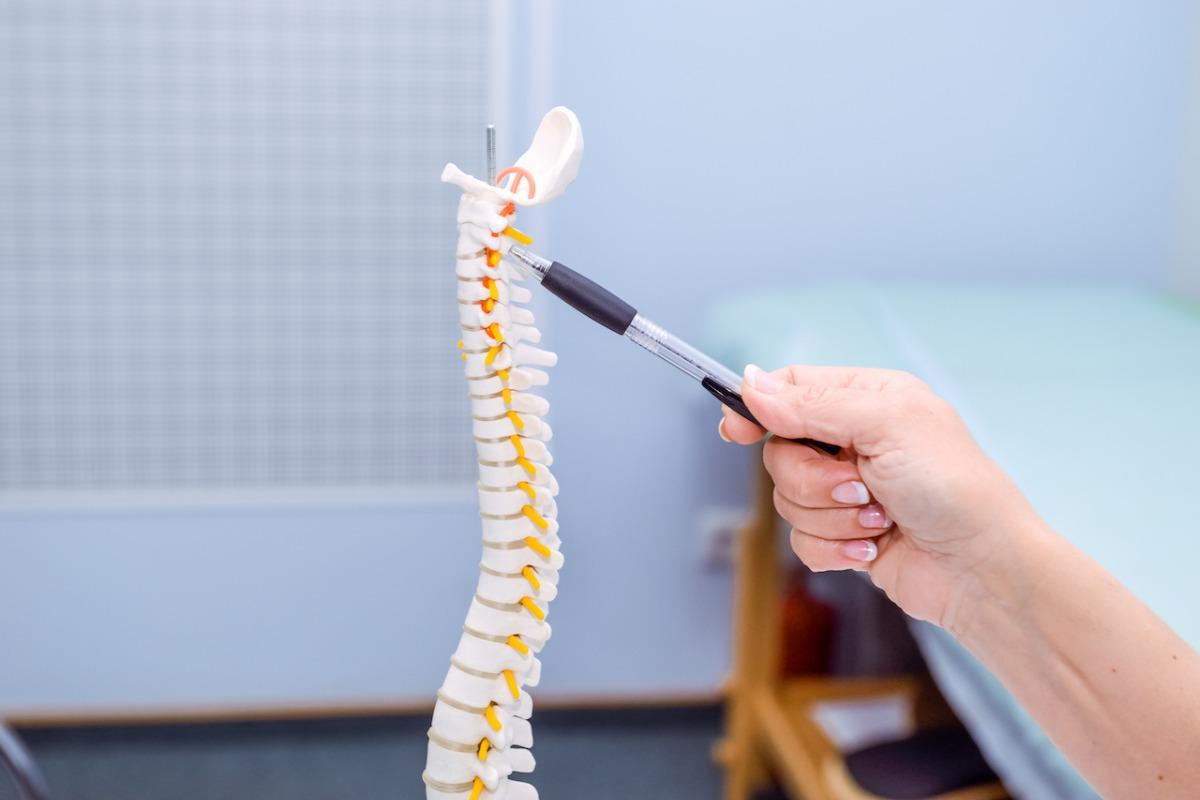
- posted: Aug. 13, 2024
The cervical curve is the natural C-shaped (or some like to call it a banana-shape) curve in the neck that plays a crucial role in maintaining overall spinal health and function. Understanding the significance of this curve, how it forms, and what can happen when this curve is lost, is key to maintaining neck health.
This curve can be characterized as a slight, inward curvature of the neck that starts at the base of the skull and continues down the thoracic spine, including the first seven vertebrae of your spine.
The curve naturally arches forward, allowing for optimal alignment and flexibility. The curve acts as a shock absorber to protect the body from everyday strain and stresses on the spine and spinal cord. Without it, the neck would be straight, and the spine would lose much of its ability to absorb impact, which has the potential to cause various health issues.
Think about holding a bowling ball close to your chest. You can hold it for a while with your arms bent just so, but if you tried to straighten your arms out in front of you, it would become significantly more difficult to continue holding.
Let’s take a closer look at the significance of having a cervical curve.
The cervical curve helps maintain spinal stability and balance, especially when it comes to supporting the head’s weight effectively. An adult human head weighs an average of 10-14 pounds. The curve ensures that this weight is distributed evenly across the cervical spine, preventing stress on the neck.
The curve functions like a spring, absorbing the shock of daily activities such as walking, running, or jumping. This absorption helps prevent wear and tear on the vertebrae and intervertebral discs, reducing the risk of degenerative conditions like osteoarthritis or herniated discs.
The cervical spine houses the spinal cord, a crucial part of the central nervous system. A healthy cervical curve provides protection for the spinal cord, and makes sure that nerve signals are able to travel freely between the brain and the rest of the body. Any alteration in this curve can compress or irritate the spinal cord and surrounding nerves, potentially leading to neurological symptoms such as pain, numbness, or tingling in the arms and hands.
A proper cervical curve contributes to good posture. When the curve is maintained, the head is aligned over the shoulders, reducing strain on the neck muscles and ligaments. Additionally, with proper posture comes full range of motion in the neck and shoulders.
There are a lot of ways you can lose this curve overtime
Car accident or trauma, like whiplash
Poor posture
Musculoskeletal conditions such as scoliosis or osteoporosis
Degenerative disc disease
Looking down for long periods of time (which is why workplace ergonomics are so important!)
Loss of a cervical curve can also put unnecessary pressure on the discs and nerves that are between each vertebrae. When the cervical curve is lost, the body ends up compensating for this misalignment. These are some of the common symptoms of curve loss:
Chronic neck or shoulder pain
Headaches
Tense musculature
Reduced Mobility
Increased Risk of Injury
Irritability
Fatigue
Numbness/tingling in the arms or hands
By making a few small changes in your lifestyle, you can maintain a healthy cervical curve and avoid the potential side effects listed above.
Pay close attention to posture, especially when you are sitting for long periods. You may have to make some adjustments to your workstation to ensure it is ergonomically designed. Avoid slouching or leaning forward as much as possible. The goal is to keep your head aligned with your spine. When using technology, try to keep your devices at eye level. Take breaks away from the phone or computer to stretch and move your neck.
Regular exercise to strengthen the neck and upper back can help support the cervical curve. Yoga and pilates are also beneficial, as these things help to promote flexibility and alignment.
And of course, chiropractic care is always recommended to keep your cervical spine in alignment. Chiropractors can identify and correct misalignments in the spine, helping to restore the natural curve.
The cervical curve is more than just a natural arch in the neck. It plays a critical role in spinal health and overall well-being. If you have been dealing with pain or any other symptoms associated with a compromised spine, it may be time to schedule an appointment with our team at Dr. Gena Chiropractic, the premiere pediatric and family chiropractic clinic serving the Plantation and the greater Fort Lauderdale community in Broward County.
Remember, your health is in your hands; our hands are here to help. Contact us at 954-417-5815 now to book a consultation.
Locations
7119 W Broward Blvd
Plantation, FL 33317, US
Office Hours
10:00 am - 1:00 pm
3:00 pm - 6:00 pm
8:00 am - 11:00 am
10:00 am - 1:00 pm
3:00 pm - 7:00 pm
9:00 am - 1:00 pm
3:00 pm - 6:00 pm
Closed
9:00 am - 11:00 am
Closed

